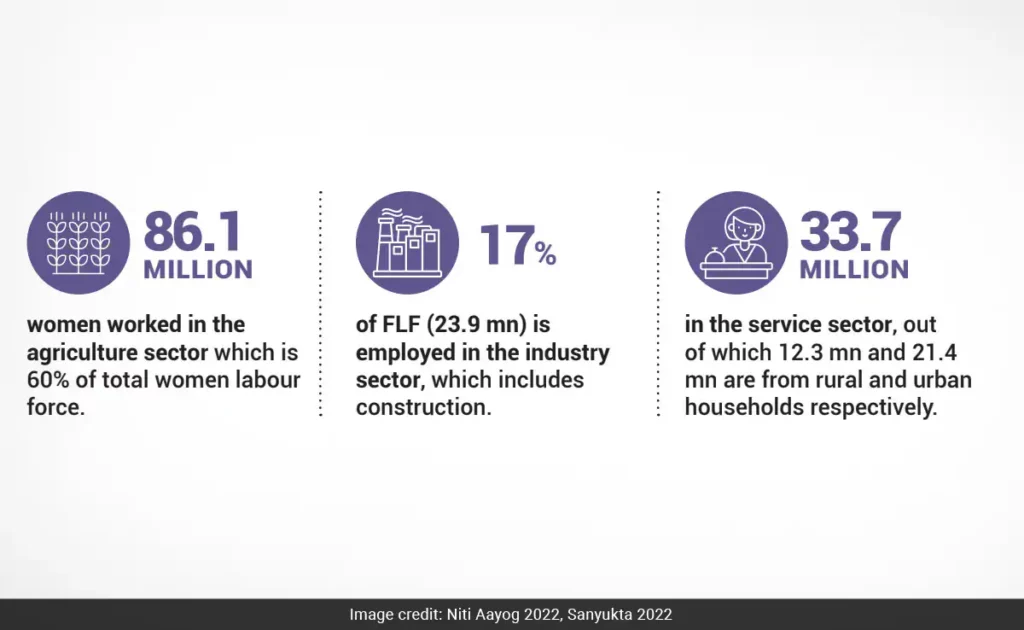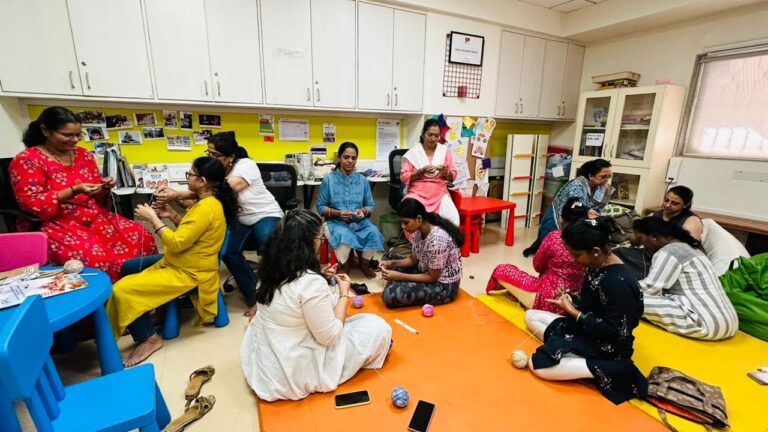Sadhana Sanjay & Tripti Naswa
Improving and encouraging women labour is also an important accelerant of economic growth. This statistic is highly sensitive to external social and economic conditions, and reflects a country’s approach towards tackling the inequalities that affect women, such as education, fertility rates, equitable fiscal policies, and social norms, among others.
For these reasons, the female labour force participation rate remains a closely tracked and relied upon figure, both domestically and internationally.
However, the statistical methods that lead to this figure are underpinned by a range of assumptions and judgments that hides much of women’s workforce participation, thus devaluing their contribution to the economy and society. Existing methodologies of measuring women labour and women labour force participation have three key shortcomings: the difficulty in measuring the value of unpaid care and domestic duties, which are overwhelmingly performed by women; a binary approach towards defining production and labour force participation; and non-recognition of the high labour market volatility that women experience.
Firstly, statistical methods use the concept of a production boundary to outline which activities are included as labour within national accounts, and which are excluded. Unpaid caregiving services and unpaid domestic services, which are overwhelmingly performed by women, fall outside its scope when these services are produced and consumed within the same household. Although women’s generational provision of a social good cannot be clearly quantified in economic terms, it remains fundamental to a country’s growth and well-being. Domestic work and caregiving for family members, for instance, are critical pillars of household well-being and welfare. Additionally, women perform an array of expenditure saving activities, such as gathering firewood, fetching water, tending to the garden, milking family cows, and so on, which are not accounted for in national accounts. It is estimated that women’s contribution to the economy through their unpaid labour is approximately 7.5% of the GDP.
Another shortcoming is the binary and dichotomous approach towards production and non-production, and either being in the labour force or out of it. Falling on either side of the binary determines whether a particular activity is reflected in national accounts, and also whether a person is counted as being part of the workforce. This does not map neatly on to the realities of women’s workforce participation, especially in a Global South context. As Professor Deshpande observes in her article, a majority of South Asian women fall in between the extremes of women who work outside the home for pay. This includes women who exclusively perform unpaid work for the household, whether it is care work or contributing to family enterprises and businesses.
Female labour force participation in India continues to be dominated by high informality and precarity, and is frequently undertaken as a consequence of household economic distress. It includes home-based work, and is often seasonal, sporadic and irregular. A study revealed that approximately 44% of women were part of the labour force when considering a period of 4 months, but only 2 percent of women were counted when considering an extended period of four years.
This demonstrates how women experience a high degree of volatility in their workforce participation. Women are also involved in family businesses and enterprises, but as these activities are undertaken within the boundaries of the home, it is rarely counted as labour, and these women are not recognised as workers. Women navigate work by simultaneously occupying the roles of a social and economic actor, and generating a combination of social and economic value through their activities.

Women are constantly working, but their labour is not counted or acknowledged due to flaws in statistical principles and approaches. This statistical flaw has material consequences. Putting women’s workforce participation outside the production boundary, also puts it outside the purview of economic policy which inhibits targeted and evidence-based policies relating to economic policy, welfare, labour market challenges, as well as issues faced by women in particular.
Incorporating a gender-intentional approach towards the collection of labour statistics is imperative to ensure that women’s workforce participation is accurately represented in national accounts, and that their specific constraints and opportunities are understood. This includes both being able to account and measure their economic contributions across the spectrum of (in)formality as well as recognising and representing the value of unpaid work, especially care work. It is thus imperative to build an alternative narrative for women’s workforce participation that recognises the indispensable role women play in building economic and social value.
The key pillars of such an approach should recognise the full spectrum of socioeconomic value that women’s work creates, and appreciate the interconnection of factors that govern the working ways of women.
It has been estimated that if women’s workforce participation were duly enumerated in national accounts and labour market statistics, the women labour force participation rate would rise to 46.2 %. Without acknowledging why women work the way they do, and the factors that inform their decisions, policies cannot appropriately target the right levers towards increasing women’s agency and participation in paid and dignified work. There is a need to steer away from mere quantification, and recognise that value is generated by labour that goes beyond market definitions of production. Women are at the centre of community and care networks, whose value cannot be measured in monetary terms alone.
This article was originally published in NDTV




